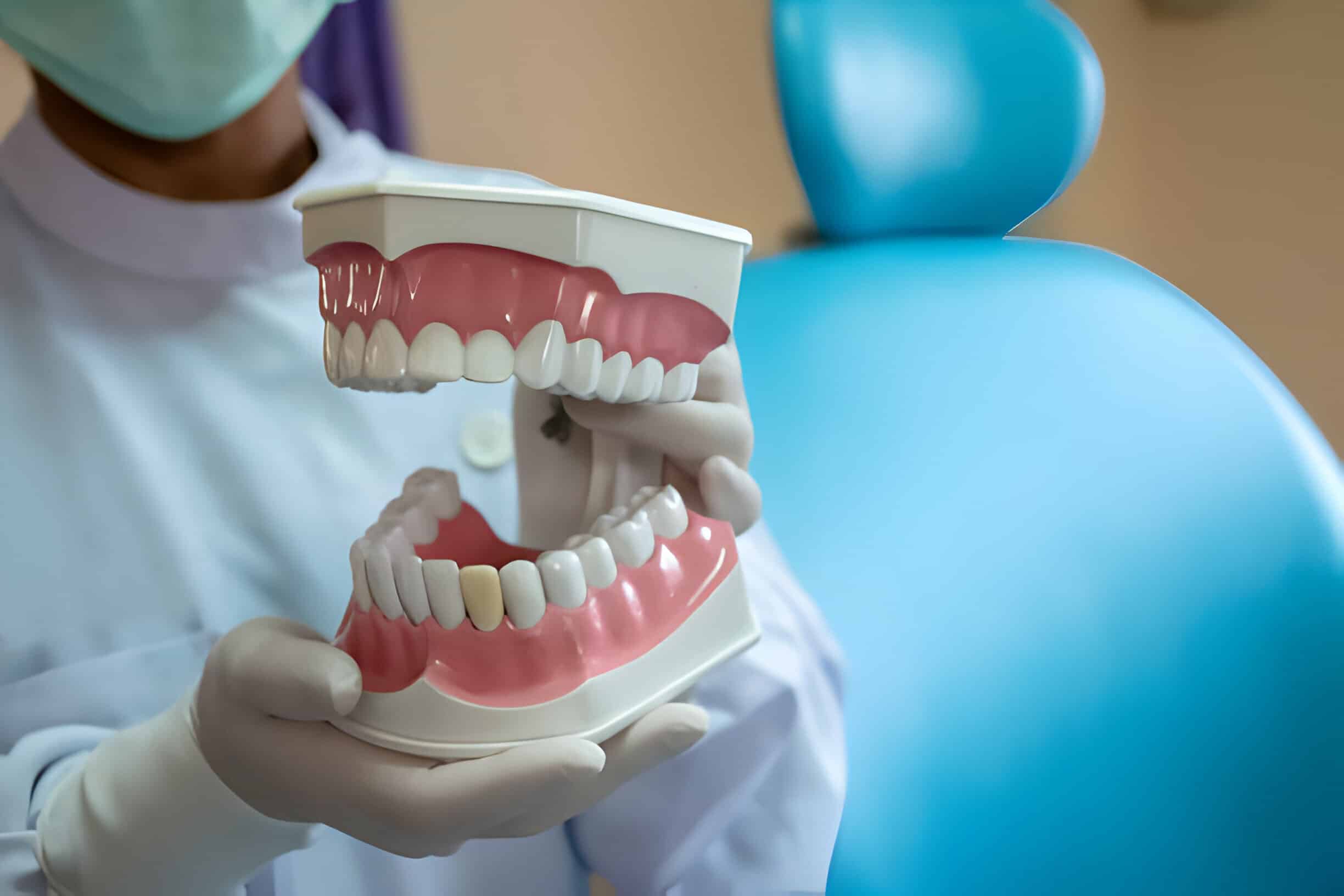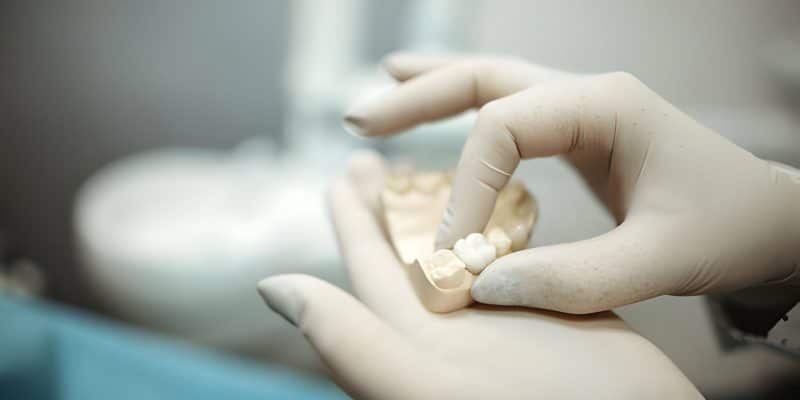Summary:
Have you ever felt your dental crowns coming loose and had no idea what to do?
Relax, it’s more common than you know! Most individuals visiting our clinic have no idea about tooth crown failure.

Dental crowns help replace your damaged tooth to make it solid and functional. But, like every other oral prosthetic, dental crowns are also temporary; sooner or later, you must replace them with new ones.
Keeping the same in mind, this blog shares our research around oral crowns in the following topics:
- Role of Dental Crowns In Smile Dentistry
- Signs Indicating The Need For Replacement Of Dental Crowns
- Steps for A Successful Crown Replacement Surgery
- Post-Treatment Care and Maintenance of Your Appliance
Continue reading to understand the signs of dental crown replacement and what you should do about it in the following sections.
Role of Dental Crowns In Smile Dentistry
Tooth loss or damaged tooth is a common dental problem caused by improper oral hygiene, poor eating habits, dental trauma, etc. Dental crowns can fix those damages and strengthen your teeth.
Crowns are essential for safeguarding weakened teeth, ensuring their durability and aesthetic appeal. These protective covers shield damaged areas, preventing decay and fractures while promoting optimal oral health.
Crowns Need Replacement, Too!
Oral crowns contribute to maintaining proper alignment and functionality of adjacent teeth, supporting overall well-being. However, these crowns come with an expiry date, and most of the caps start to come off after five years.
It usually means that the adhesive secure of the cap is wearing off for some reason. Let’s dive into the signs to look for to understand when your dental crowns are wearing off and when you need a replacement.
Signs Indicating The Need For Replacement Of Dental Crowns
Dental crowns are crucial restorations for damaged teeth, providing strength, protection, and aesthetic enhancement. While professional dentists in Love Park, IL, ensure they’re durable, oral appliances are fragile and will wear and tear over time.
Recognizing the signs that indicate the need for replacement is essential for maintaining optimal oral health and preventing complications. Here are some indicators that suggest it’s time to replace dental crowns.
Visible Damage:
Regular inspection of dental crowns is vital to detect any visible signs of damage. Cracks, chips, fractures, or wear along the biting surface can compromise the cap’s effectiveness and leave the underlying tooth vulnerable to decay and further damage.

Discomfort or Sensitivity:
Persistent discomfort or sensitivity around a crowned tooth can signal underlying issues that require attention. This may include decay, infection, or a poorly fitting crown. Discomfort while chewing or biting down could indicate that the crown is not providing adequate protection or support.
Loose Crown:
A loose crown may indicate tooth crown failure. It could be due to weakened tooth structure underneath the crown, deterioration of the cement holding the crown in place, or other factors. You should not ignore a loose crown, as it can lead to complete dislodgement and potential damage to the underlying tooth.
Changes in Appearance:
You should note the changes or signs of cavities under crowns and investigate further. Discoloration, dark lines near the gum line (standard with metal crowns), or a mismatch with the natural teeth can indicate underlying issues such as decay, leakage, or a failing restoration.
Previous Dental Work:
If you’ve undergone previous procedures such as root canal therapy or extensive tooth restoration, the longevity of your crowns may be affected. These procedures can weaken the tooth structure and increase the risk of crown failure over time.
Steps for A Successful Crown Replacement Surgery
As dental crowns serve a critical role in preserving the structural integrity and functionality of teeth, it’s imperative to promptly address any signs of wear, damage, or deterioration.
Here’s a detailed overview of what to do when faced with the need for teeth crown replacement:
Step 1 – Initial Assessment and Examination:
Replacing a crown typically begins with a qualified dentist’s initial assessment and examination. It’s essential to schedule an appointment at the earliest convenience upon noticing any discomfort, sensitivity, or visible changes in the dental crown.
Step 2 – Thorough Evaluation of Crown Condition:
During the examination, your dentist will thoroughly evaluate the crown’s condition. This entails inspecting for cracks, chips, signs of decay underneath the crown, or any indications of improper fit. These assessments help determine the necessity and urgency of crown replacement.
Step 3 – In-depth Discussion of Treatment Options:
After the assessment, your dentist will discuss treatment options tailored to your needs and preferences. It may involve selecting the most suitable material for the new crown, considering factors such as durability, aesthetics, and compatibility with surrounding teeth.

Step 4 – Preparation Phase:
Once the decision to proceed with the crown replacement process is made, your dentist will commence the preparation phase. This entails carefully removing the existing crown, which may involve using specialized tools and techniques to minimize discomfort and preserve underlying tooth structure.
Step 5 – Customized Fabrication of New Crown:
With the tooth prepared, impressions or digital scans of the tooth and surrounding area will be taken to facilitate the fabrication of a custom-designed crown. Modern advancements in oral technology allow for precise and accurate cap fabrication, ensuring a seamless fit and natural appearance once placed.
Step 6 – Final Placement and Adjustment:
Upon completion of the cap fabrication process, the final step involves placing and adjusting the new crown. Your dentist carefully positions the cap, ensuring proper fit, alignment, and bite to restore functionality and aesthetics. Dentists will make necessary adjustments to optimize comfort and functionality.
Post-Treatment Care and Maintenance of Your Appliance
- Avoid sticky and hard foods: Crowns are long-lasting and powerful, yet they can be damaged like natural teeth. Chewing on ice or hard sweets might chip, shatter, or break your cap, necessitating an earlier replacement than usual.
- Brush and floss to keep the tooth healthy: Your cap may be “artificial,” but the supporting tooth below needs frequent dental care to remain healthy and sound. Even though the appliance covers the whole tooth surface, brush it thoroughly to eliminate sticky plaque coating and keep the cap looking good.
- Kick your bad habits: Are you habituated with nail-biting? Chew on ice, pencils, or other hard objects? Do you grind your teeth when you are stressed? Use your teeth as “tools” to remove stubborn bottle tops. Stop. These practices might damage not only your crowns but also your natural teeth.
Takeaway
- Dental crowns are vital for restoring damaged teeth, enhancing strength, and maintaining oral health.
- Despite their durability, dental crowns are temporary and typically require replacement every five years due to wear and tear.
- It’s crucial to promptly address signs of wear or damage to prevent complications and maintain oral well-being.
- Have queries about your appliance? Don’t wait for the condition to become severe. Connect with our Loves Park Family Dental experts today!

